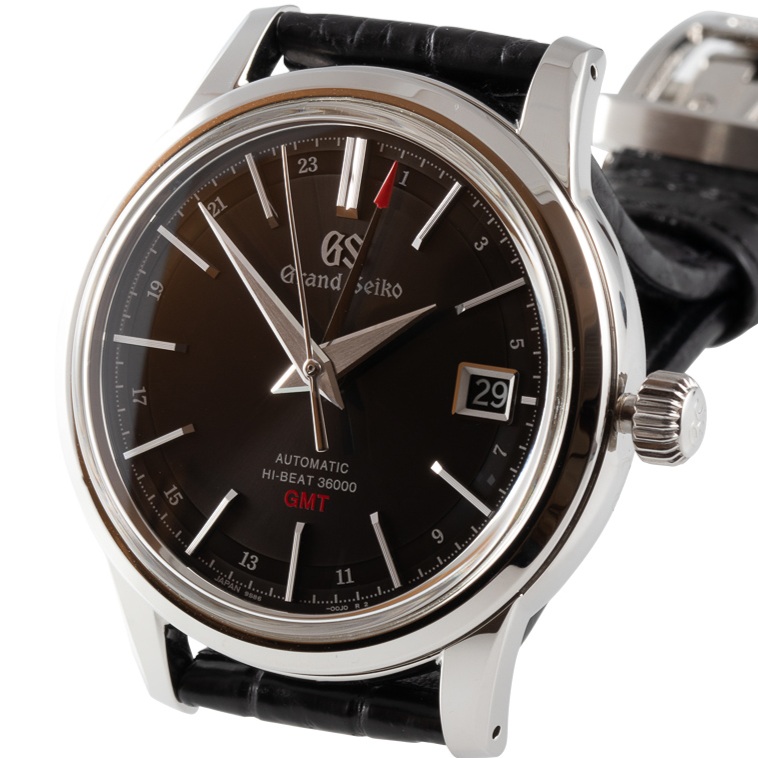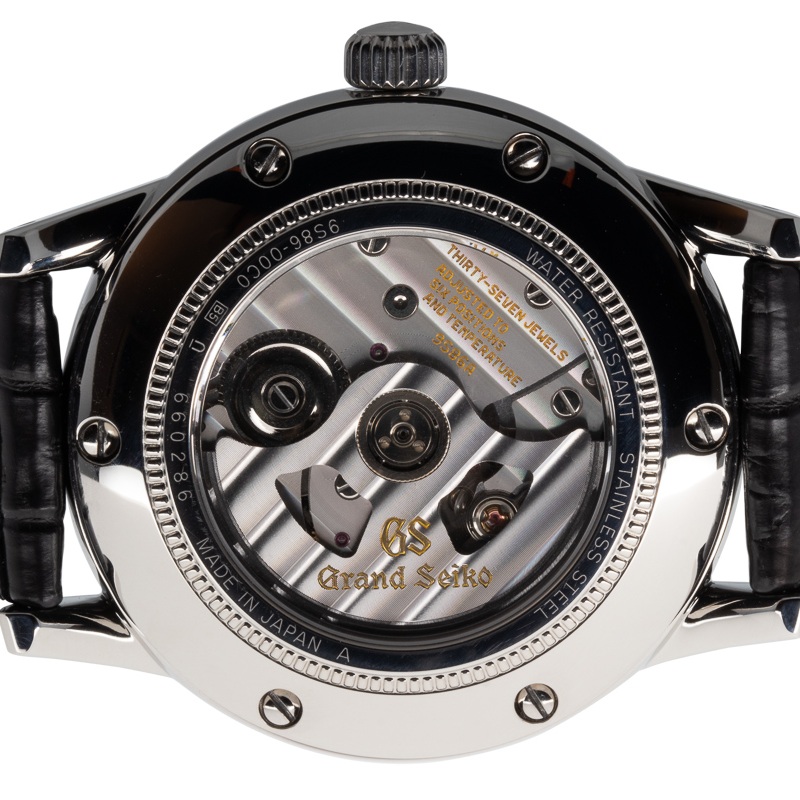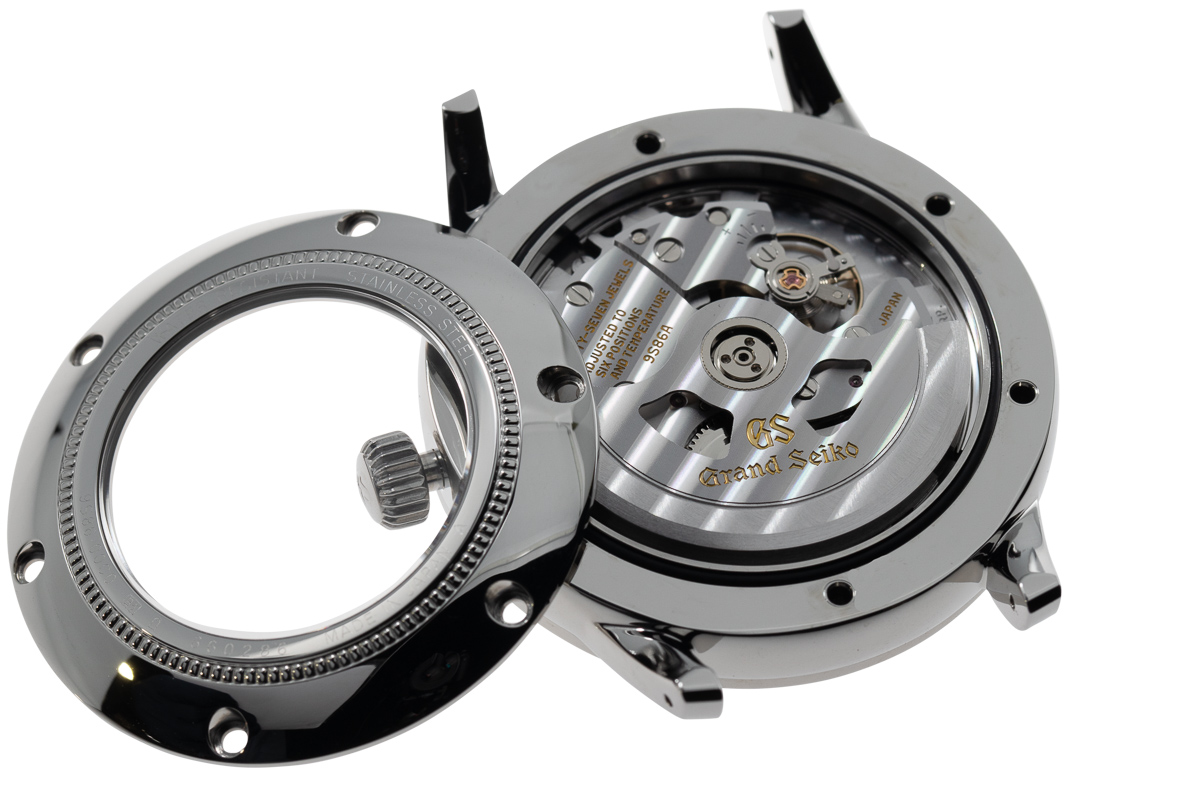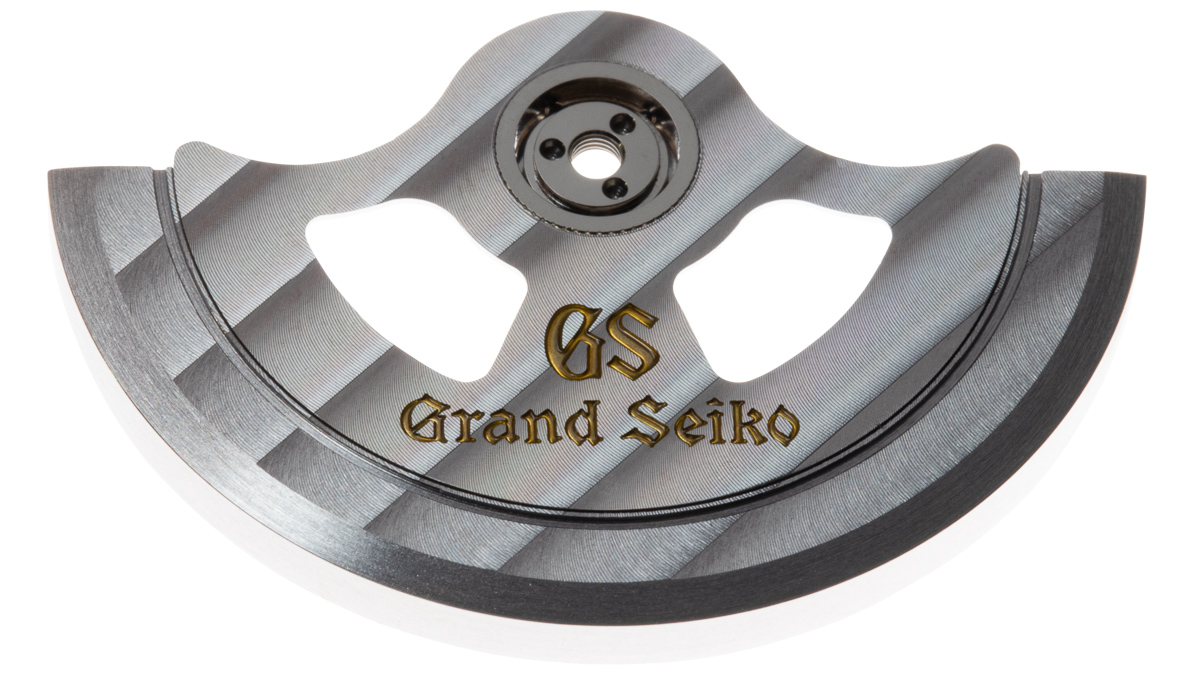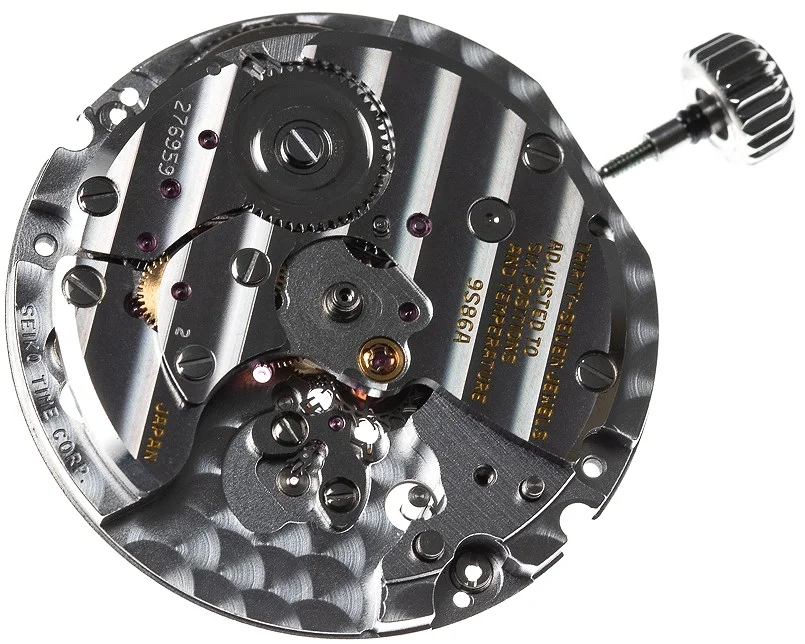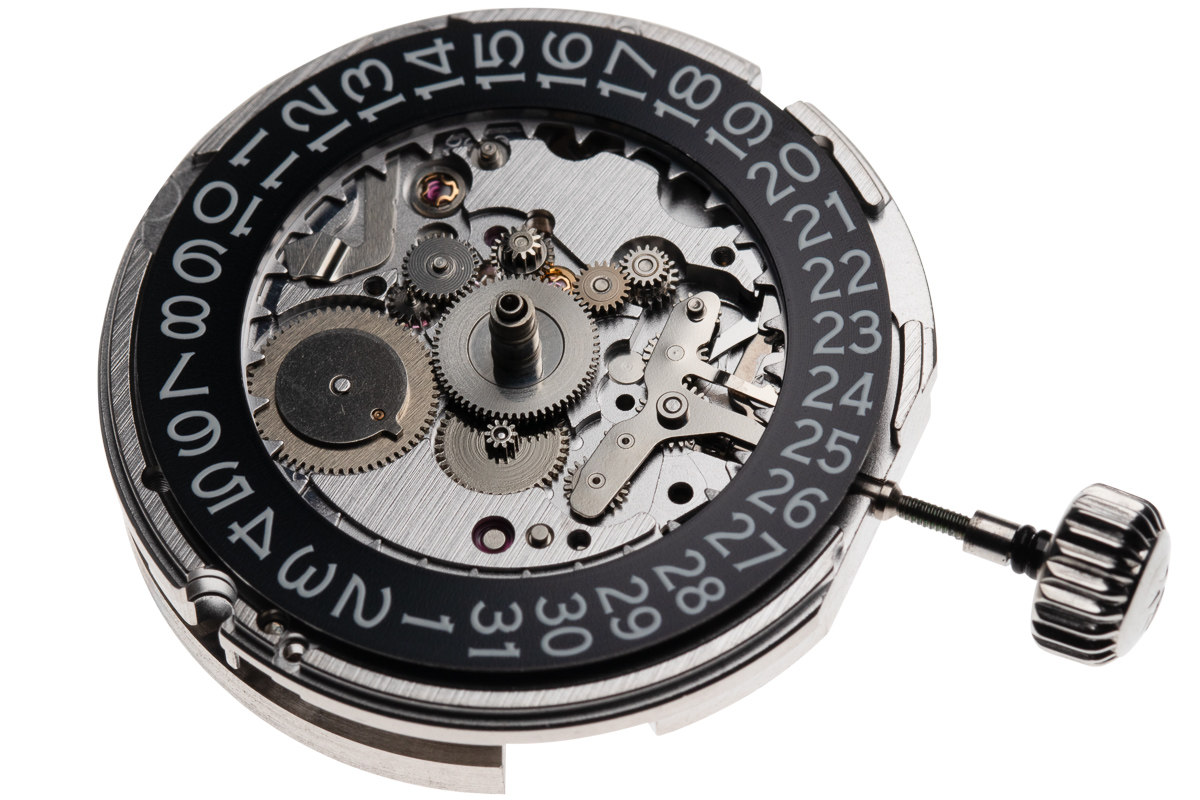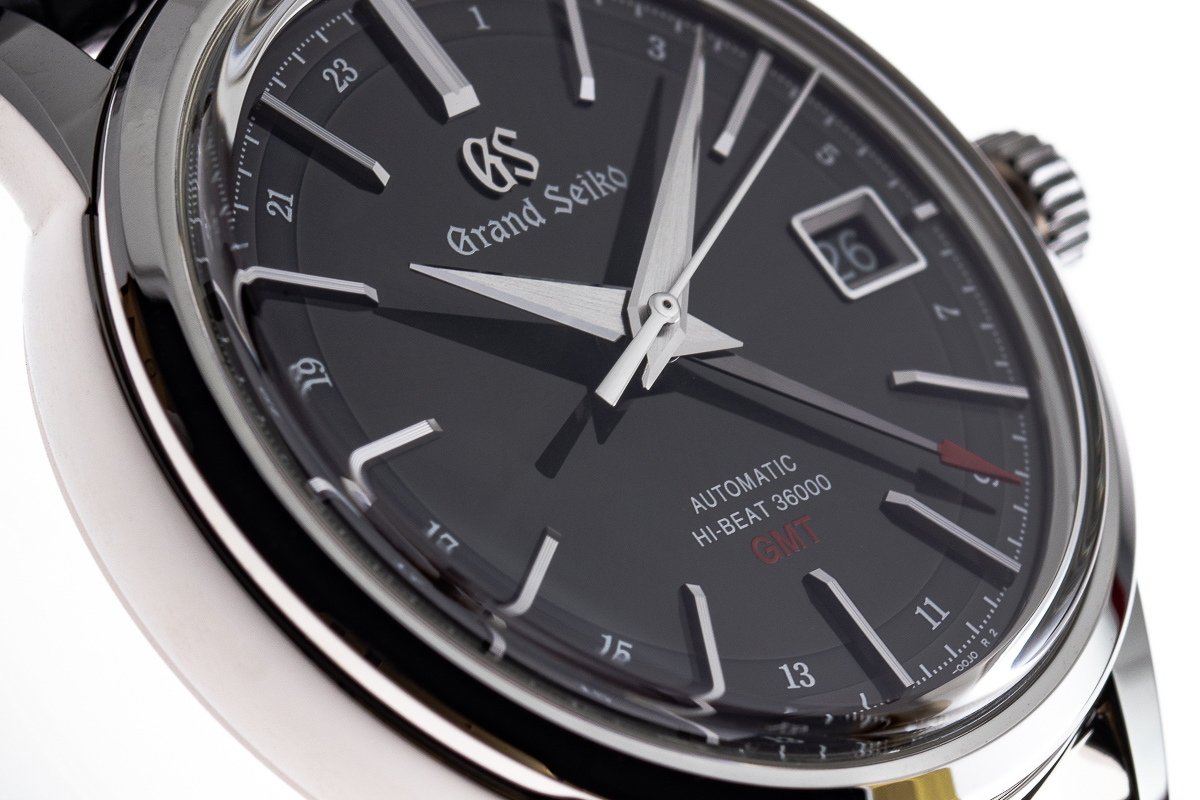The Reason
A simple GMT system with the main hour hand adjusted on the first pulled out setting of the winding crown. A classically designed watch with an unusual casing screw with independent seals designed to render the watch, water resistant.
Introduction/functions
Incorporating the caliber 9S86. Power reserve 55 hours. The GMT hand can be used as a dual time indicator as the time continues to mark local time. Date set at 3 o’clock.
Technical Specifications
The movement caliber is 9S86. Movement Type: Automatic with manual winding capacity. Power reserve: 55 hours. Accuracy: +5 to -3 seconds per day (when static) +8 to -1 seconds per day (normal usage accuracy). Case Material: Stainless steel. Glass Material: Box shaped sapphire (similar in design to early UB (Un-Breakable) perspex glasses which were used prior to sapphire, the form lends to the 1950’s overall styling. Glass Coating: Anti-reflective coating on inner surface. Case size: Diameter 39.5mm × Thickness 13.9mm.
Please move the cursor across the image below, (or by finger on a smart phone), to rotate the watch.
The case back with sapphire crystal is screwed in place using 6 stainless steel screws.
The case back removed.
The case assembly is made with 3 main parts and held together with 6 screws which traverse them, from back to bezel.
The stainless steel casing screws are unique to Grand Seiko and carry their own patent. They guarantee the water resistance on the bezel side of the watch where the case construction leads to the principle round silicon seal is on the outside of the holes that hold the bezel in place. If any moisture was to pass through the screws head millings in the case back the small seals around the screws would prevent it from going any further.
The main seal for the case back is found on the inside of the case screws meaning the case back is unaffected by the 6 holes holding it in place.
The stainless steel case back with sapphire glass etched with the companies name and logo.
The profile of the movement outside of the case with the movement ring still in place. Once the case screws holding the case together and the stem are removed the complete assembly lifts out of the case centre.
Following the overall Grand Seiko design DNA the batons, and hands are strongly 3 dimensional.
The dial and hands removed from the movement.
The 3 tubes and seconds pivot upon which the hands are pushed.
Recto-verso of the calibre.
Recto-verso of the rotor weight.
The rotor removed.
The balance cock and wheel removed, showing the escapement.
The balance cock and wheel assembly.
The index boot and pin. The pin is eccentrically machined onto the underside of the paddle viewed above.
The first gears that mesh with the rotor weight.
The second bridge removed from the automatic gear train.
The main train bridge and ratchet wheel removed.
The jewelled barrel bridge removed.
The escape-wheel and pallet fork.
MEMS technology developed in-house from semiconductor manufacturing, the escape wheel and pallet fork used in the Caliber 9S series. MEMS (Micro Electro Mechanical System) is a technology that allows components to be lighter, smoother and, in the case of the escape wheel a more intricate design. The new design of the escape wheel featured oil reservoirs at the end of each gear tooth, improving the retention of oil. The same technique is executed in Switzerland by companies like Mimotec.
The step in the teeth acts as a reservoir for the lubrication.
The cut out’s result in a lighter pallet fork.
The gear train.
The barrel and ratchet wheel.
The gold coloured wheels are part of the going train.
The main-plate virtually dismantled.
The reverse view of the remaining upper bridge still in place which guides the seconds wheel and canon pinion.
The calendar plate removed, which holds both the calendar and the GMT mechanism in place.
The date disc removed.
In the centre of the above image is the wheel, shown below upon which the principle hour hand sits and can be adjusted independently to show the home time.
The majority of the motion work and GMT system removed.
Summary
As with the Grand Seiko Hi-Beat deconstructed -here- the overall construction of both the movement and the case is congruent with the goal of a strong and precise timekeeper designed for longevity. The resulting calibre combines vintage solidity in construction with, modern manufacturing techniques and alloys effectively.
To learn more about Grand Seiko
